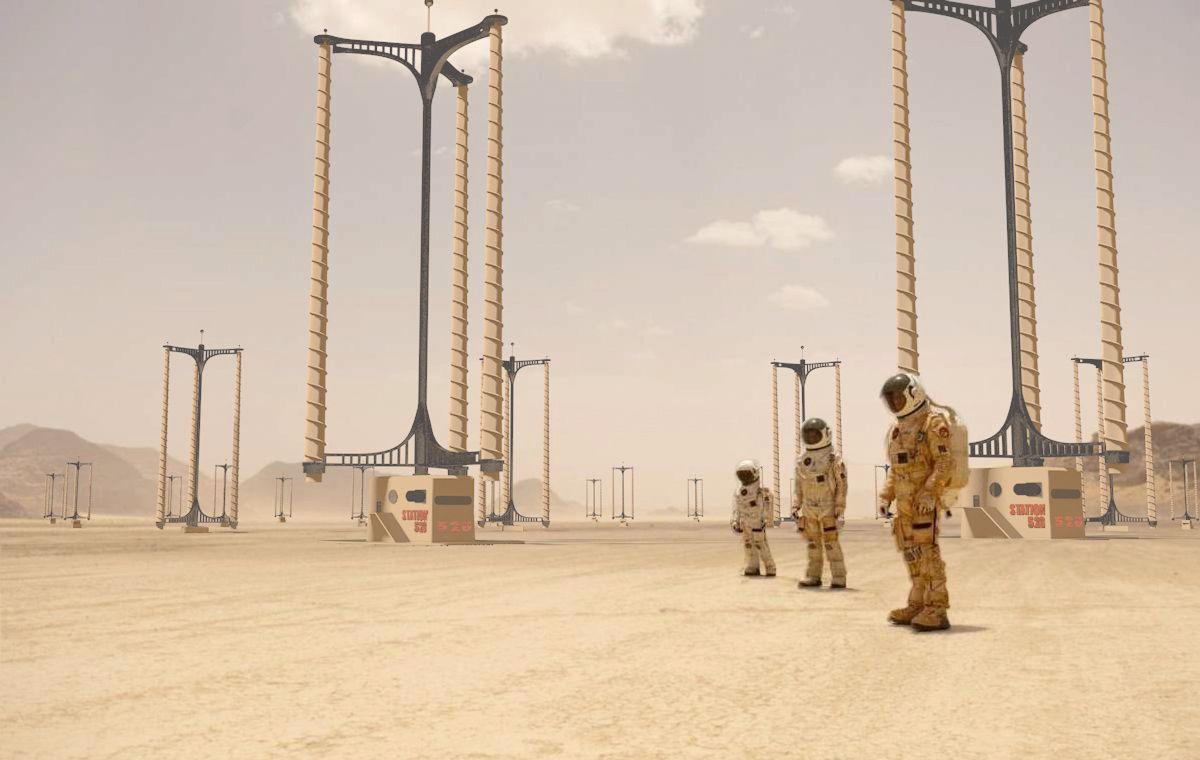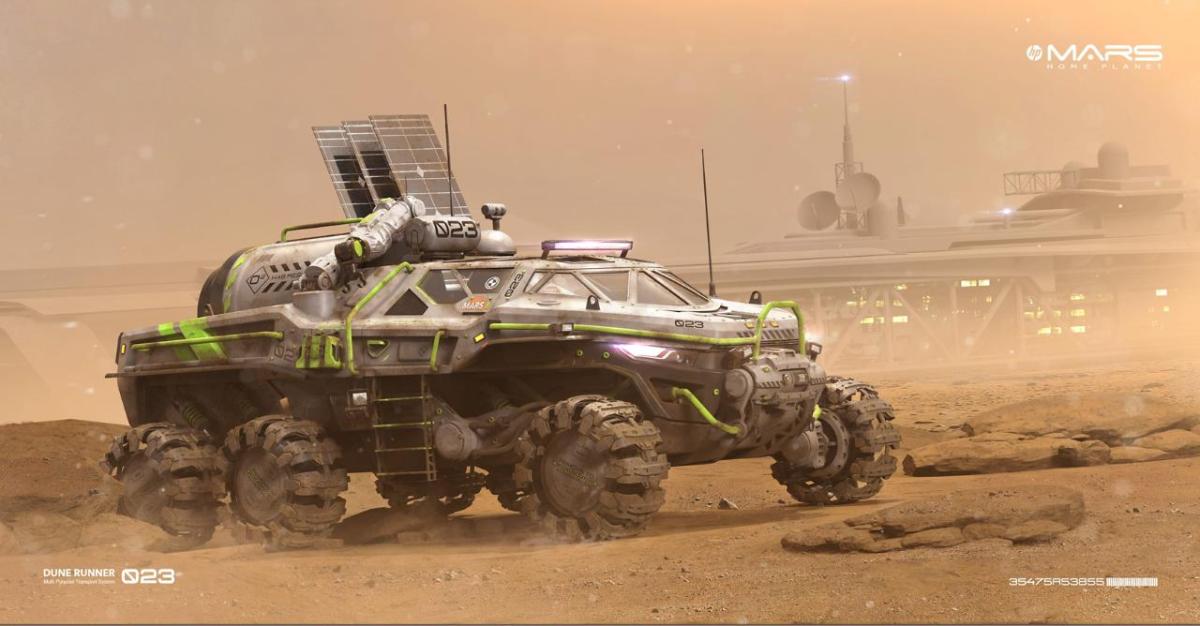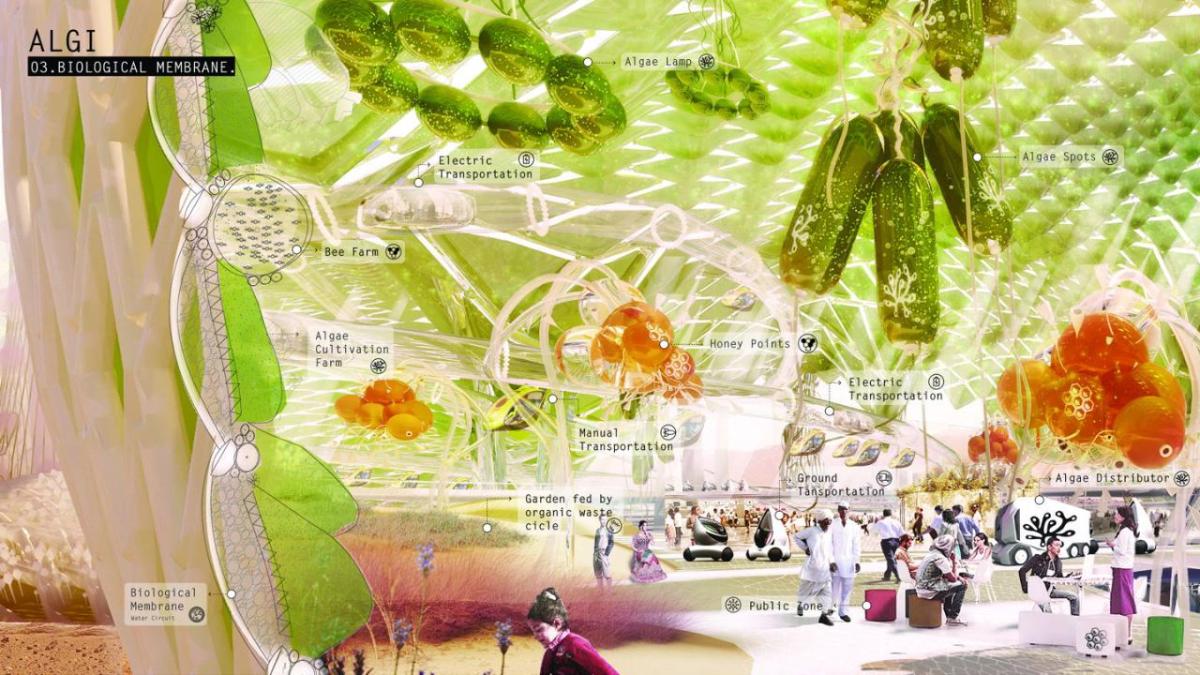Ready, Set…Mars! Imagining Life on the Red Planet
After reviewing months of work and hundreds of 3D designs, HP’s second Mars Home Planet challenge unveils its 10 finalists.
A solar-field construction vehicle with nimble robot arms that piece together solar cells. Vertical turbines that harness the energy of dust storms — and shield nearby cities from their force. A compact settlement built underground in rust-red soil, capped by series of stunning atriums.
Those are just a few of the winning entries that wowed the judges of the second round of HP’s Mars Home Planet challenge, including star architect Daniel Libeskind; Dr. Robert Zubrin, president of the Mars Society; and Dr. Sanjay Vijendran of the Mars Mission for the European Space Agency.
“The entries are mind-bending,” says Sean Young, HP’s worldwide segment manager for product development and AEC. “Some are so beautiful and so well thought out that it makes you want to go live on Mars.”
A bounty of engineering skill and innovative thinking
Launched last summer by HP and a host of partners including NVIDIA, HP’s Mars Home Planet is a yearlong crowdsourcing project with one goal — to imagine what life might be like for a city of one million people on Mars. By this August, the project will create a full-blown virtual-reality experience that will bring visitors into the world the challenge's participants envision for human habitation of the Red Planet. So far, 82,500 people from all over the globe have joined the party.
In this second round of the challenge, teams and individuals submitted 332 designs in seven categories, from mechanical engineering to interior design. Young says dozens of the top entries in each category showed remarkable levels of engineering skill and innovative thinking.
Far out dune runner
Igor Sobolevsky, a project industrial designer at Stanley Black & Decker in Baltimore, who won in the vehicle-design category, says he happily holed up at home for a month to work on his submission. “One of my passions is physics and space exploration — painting a vision of what all these potential developments and technologies could be,” says Sobolevsky. “So when I saw this contest, I decided to go all in.”
Sobolevsky designed the Dune Runner, a muscular yet sleek electric truck for transporting Martian citizens and goods in an imaginary colony 50 years from now. Equipped with solar arrays and manipulator robot arms that can move payloads on and off the truck, the Dune Runner can climb steep Martian surfaces and work nonstop for up to 12 hours.
In Studio Libeskind’s notes about this winning submission, the firm described Sobolevsky’s space vehicle as “a virtuoso design interpretation of transport over the Martian landscape. Life on Mars doesn’t need to be all work, but can include play.”
Putting garbage and waste to good use
On the other end of the design spectrum, Nacho Martin of Spain won for his Algi City, an undulating, organic metropolis on Mars. Protected by a biological membrane made of algae and water, Algi City is designed to be a no-waste collective committed not just to the closed-loop reuse of resources on Mars, but also to using recycled resources from Earth, such as plastics.
“Algi City presents a remarkable vision of future habitation, with a dizzying array of technology meets biology,” wrote judge Dr. Darlene Lim, a geobiologist at NASA Ames Research Center, in her notes on the winners.
Ramping up to 3D
This is the second time the work of Mars Home Planet's community of students, scientists and space lovers from all over our planet has impressed the judges. The project’s first competition, which ended in November, was designed to get participants’ creative juices going. And boy, did it ever — entrants submitted sophisticated, detailed conceptual designs for how people might live, raise food and get around on Mars.
For round two the difficulty was ramped up significantly. In addition to coming up with designs, participants had to create 3D models of their submissions using Autodesk software (which Autodesk provided as free-trial copies). The science and engineering of the submissions also had to hew to the physical realities of the Red Planet, from its lower gravitational force to its higher levels of radiation.
“The challenge is not for the faint of heart,“ notes Aimee Doyne, an AEC and product-development segment project manager at HP who is also managing the competition. “Yet the overwhelming response and incredible contributions continued — people did not lose steam.”
Up next: a virtual visit to Mars
Now, it’s all systems go for the third round of the Mars Home Planet challenge: the rendering phase. Participants will be asked to create still, animated, real-time or VR renderings depicting a smart city or region on Mars for a million people. That will provide the leadup to the final phase, whose winning 3D models will be put into Epic Games’ Unreal Engine to create the virtual-reality simulation. Experts from Technicolor and HP will oversee this stage of the project, working with community members to create a VR experience that will be unveiled to the public in August.
For Sodolsky, the project is beyond fun — it's inspiring. “The Mars Home Planet challenge paints a positive vision of the future, and that’s something I’d like to contribute to in any way I can.”
It’s certainly a whirlwind of a year for scientists and space aficionados. See you after round three!
Here's a full list of the winners of the HP Mars Home Planet 3D Modeling Challenge:
Civil Engineering Winner:
Athena – A City On Mars (Architectural Design)
N. Logesh
India
Architecture Winner:
MARTROPOLIS
Will Zhu & Junru Tao
Australia
Interior Design Winner:
ALGI_The Green Million City
Nacho Martin
Spain
Vehicle Design Winner:
Dune Runner/Multi Purpose Transport System
Igor Sobolevsky
USA
Industrial Design Winner:
SCV (Solar Field Construction Vehicle)
Gurupkar Nerwal
USA
Mechanical Engineering Winner:
Shielding and Harnessing Energy from Mars Dust-Storms
Bijay Balia Hembram
India
3D Art Winner:
Martian Settlement
Alexander Zhilkin
Russia
Community Awards Winners:
Mars MMR
Yanmou Ni
France
The Mars Ranger
Matthew O’Halloran
Sweden
Long Range Universal Platform
Rustam Shaikhlislamov
Russia
Sign up to help design the colony on Mars for a million people.




